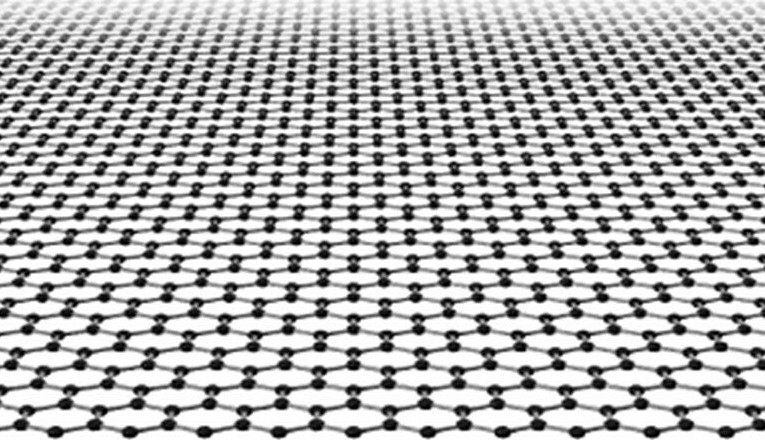Accidental Discovery Advances Graphene-based Electronics
April 19, 2012
on
on

The accidental discovery of a graphene-like material with semiconductive properties brings graphene-based electronics one step closer.
The amazing properties of graphene make it a likely candidate to spur on the next revolution in electronics. Graphene, the one-atom-thick layer of carbon structured in a honeycomb lattice, is the strongest material known to man (200 times stronger than structural steel) and has the best electrical conductivity.
Silicon-based microchips have doubled in processing speed and memory capacity approximately every two years -making electronic devices ever faster, cheaper and smaller- but now the technology is reaching its physical limits.
Scientists are looking into graphene to replace the ubiquitous silicon but the research is still in its laboratorial phase. Manufacturing costs are still prohibitively high and it is difficult to control the flow of electrons. Graphene can act as conductor or insulator but not as a semiconductor.
In an attempt to solve the first problem, a team of scientists at the University of Wisconsin-Milwaukee accidently hit on a solution for the second.
Physics professor Marija Gajdardziska and Junhong Chen, professor of mechanical engineering, were looking for a way to make graphene from a related material: graphene oxide (GO). GO has the same monomolecular layered structure as graphene but in GO the layers are irregularly packed. Because GO can be mass produced inexpensively the scientists attempted to manipulate the material into adopting graphene’s structure thus producing cheaper graphene.
They hypothesized that if they could remove the oxygen from the compound the GO would transform into multilayered graphene. So they heated the GO in a vacuum to reduce oxygen. But instead of being destroyed the oxygen atoms aligned themselves with the carbon atoms. Forming a carbon oxide that does not exist in nature which the researchers have given the name graphene monoxide (GMO).
To their own surprise the newly created graphene-like material had semiconducting properties. Creating a breakthrough in graphene-based electronics even though it was not the one they were looking for.
For more information: University of Wisconsin-Milwaukee
The amazing properties of graphene make it a likely candidate to spur on the next revolution in electronics. Graphene, the one-atom-thick layer of carbon structured in a honeycomb lattice, is the strongest material known to man (200 times stronger than structural steel) and has the best electrical conductivity.
Silicon-based microchips have doubled in processing speed and memory capacity approximately every two years -making electronic devices ever faster, cheaper and smaller- but now the technology is reaching its physical limits.
Scientists are looking into graphene to replace the ubiquitous silicon but the research is still in its laboratorial phase. Manufacturing costs are still prohibitively high and it is difficult to control the flow of electrons. Graphene can act as conductor or insulator but not as a semiconductor.
In an attempt to solve the first problem, a team of scientists at the University of Wisconsin-Milwaukee accidently hit on a solution for the second.
Physics professor Marija Gajdardziska and Junhong Chen, professor of mechanical engineering, were looking for a way to make graphene from a related material: graphene oxide (GO). GO has the same monomolecular layered structure as graphene but in GO the layers are irregularly packed. Because GO can be mass produced inexpensively the scientists attempted to manipulate the material into adopting graphene’s structure thus producing cheaper graphene.
They hypothesized that if they could remove the oxygen from the compound the GO would transform into multilayered graphene. So they heated the GO in a vacuum to reduce oxygen. But instead of being destroyed the oxygen atoms aligned themselves with the carbon atoms. Forming a carbon oxide that does not exist in nature which the researchers have given the name graphene monoxide (GMO).
To their own surprise the newly created graphene-like material had semiconducting properties. Creating a breakthrough in graphene-based electronics even though it was not the one they were looking for.
For more information: University of Wisconsin-Milwaukee
Read full article
Hide full article


Discussion (0 comments)